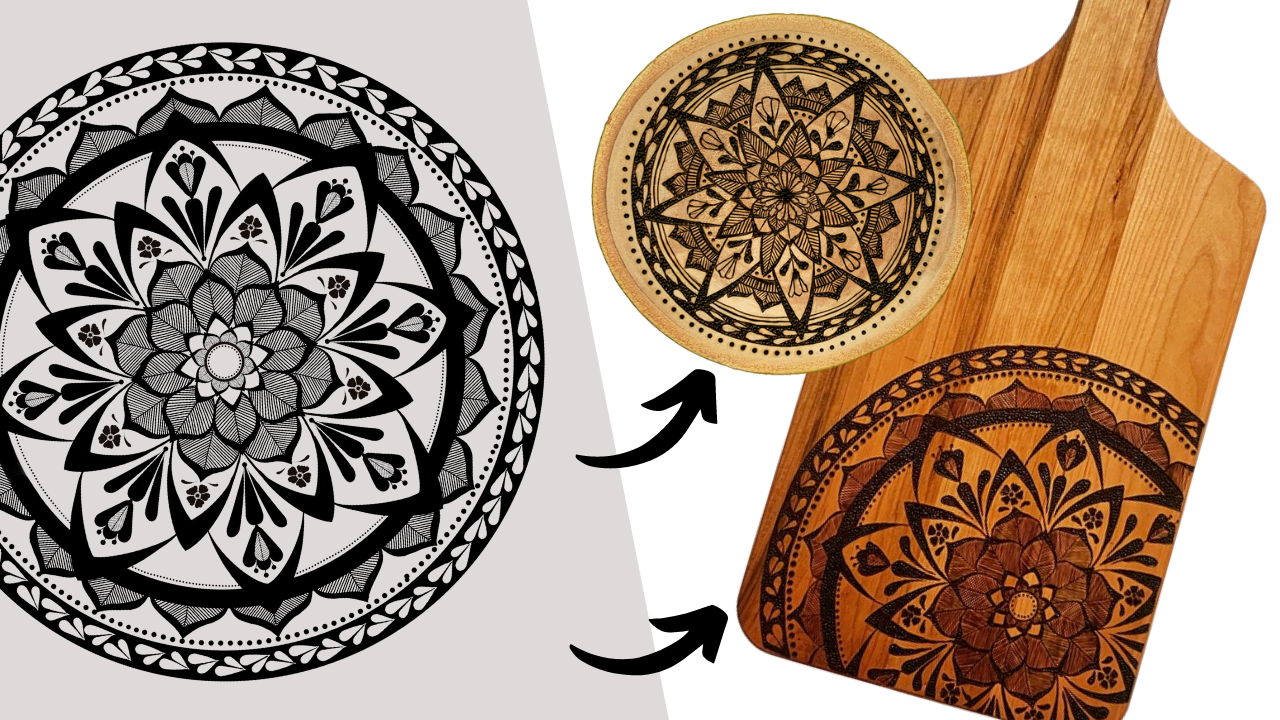Thank you for purchasing my book, Presence!
I hope that you have found some peace of mind and are hooked on patterns and symmetry, just like I am!
how to transfer your design
Easily transfer designs onto a wood slice using one of these top three ways
try your hand at pyrography and, once drawn or transferred, burn the design onto wood:
What else can you do with these patterns?
Certain art mediums demand thicker, more durable paper to hold up to the weight, moisture, or layering techniques involved. use the transfer techniques mentioned above or download a digital version of the book and print your designs onto thicker paper.
As a thank you for purchasing a hardcopy of this book, use the coupon code FLP25 for 25% off of the digital version.
For more patterns and templates, visit my template store on my community website, Wood burn corner.
try experimenting with:
Watercolour: Watercolor paper is usually quite thick to absorb the water and pigment. It often comes in various textures and weights but is generally much thicker than standard drawing paper.
As mentioned in the book, use an archival ink pen for your outline so when you add watercolour, your design won’t smudge.
Acrylics: Though often applied to canvas, acrylics can also be used on heavy-weight paper specifically designed for acrylics. This paper needs to be thick enough to handle the wet medium.
Gouache: Like watercolor, gouache is a water-based medium that requires a heavy paper that won't warp or degrade when wet.
Ink Wash/Pen and Ink: These mediums can bleed through or warp lighter paper. Heavyweight, often coated, paper works best for ink techniques.
Pastels: Pastel paper is often textured and more robust to hold onto the pastel pigments. Artists often choose a thicker paper for layering and blending.
Charcoal: Charcoal can be messy and requires a paper that can withstand layering and blending. A thicker paper will also prevent tearing when erasing or applying fixatives.
Mixed Media: For art that uses a combination of drawing, painting, and collage techniques, a heavy mixed-media paper is often the best choice.
Printmaking: Techniques like linocut, woodcut, or etching require sturdy paper that can endure the pressing process without tearing.
Collage: Given that collage involves adhering various elements to a surface, a sturdy, thick paper base is often recommended.
Marker Art: Markers can bleed through thin paper, so thicker papers, sometimes specifically designed for marker use, are recommended to prevent this.
Oil Pastels: The waxy, heavy nature of oil pastels requires a paper that can support the medium without tearing or becoming overly saturated.
12. pencil crayons: add a burst of colour to your pattern with pencil crayons. thinner paper holds up to these unless you are using water soluble ones, or pressing super hard.
The mediums are limitless! I hope this list gives you some inspiration to take your designs, or mine, to the next level!!


